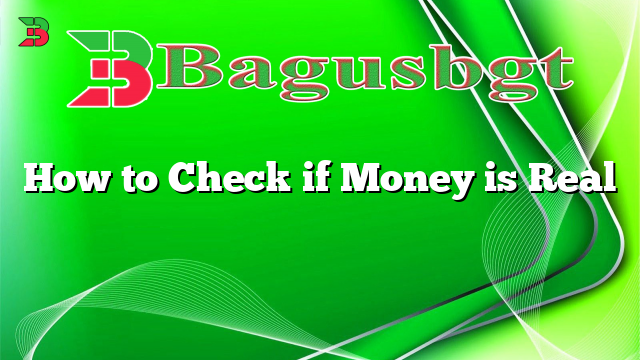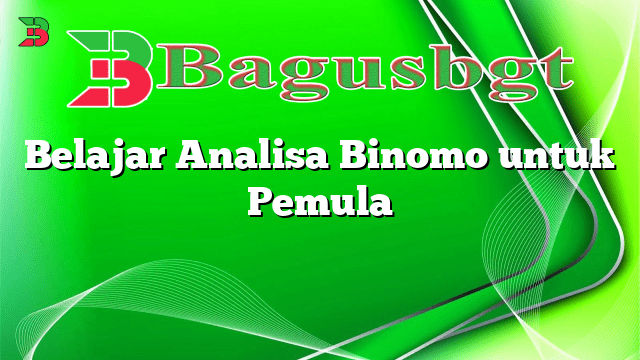Salam! In this article, we will guide you on how to check if money is real. With the increasing circulation of counterfeit currency, it is crucial to familiarize yourself with the necessary steps to ensure the money you receive is genuine. By following these guidelines, you can protect yourself and your business from falling victim to counterfeiters.
1. Examine the Paper
The first step in verifying the authenticity of money is to examine the paper it is printed on. Genuine currency is printed on a special type of paper that gives it a unique texture. Counterfeit bills are often made with regular printer paper or low-quality materials, resulting in a distinct difference in texture. Feel the bill between your fingers to check for any inconsistencies.
Additionally, genuine money has tiny red and blue fibers embedded within the paper. Counterfeit bills may lack these fibers or have them printed on the surface instead of being embedded.
2. Observe the Watermark
Watermarks are an essential security feature in banknotes. Hold the bill up to the light and look for a faint image or pattern embedded within the paper. The watermark should be visible without any signs of being printed on the surface. Counterfeit bills may have watermarks that are blurry or not present at all.
3. Check the Security Thread
Genuine currency has a thin, embedded security thread running vertically through the bill. Hold the bill up to the light to see the thread, which appears as a continuous line. The location of the thread varies depending on the denomination. However, counterfeit bills may have a visible line printed on the surface to imitate the security thread, so it is important to ensure it is embedded within the bill.
4. Inspect the Microprinting
Microprinting is a feature that counterfeiters often struggle to replicate accurately. Genuine bills contain tiny letters and numbers that are crisp and clear when viewed under a magnifying glass. Counterfeit money may have blurry or broken microprinting that is difficult to read.
5. Verify the Holographic Strip
Some currencies, such as the US dollar, have a holographic strip embedded within the bill. Tilt the bill back and forth to see if the holographic strip shifts between different images or colors. Counterfeit bills may lack this strip altogether or have a stationary holographic strip that does not change.
6. Check for Color-Shifting Ink
Certain denominations may have color-shifting ink on specific areas of the bill, such as the numeral indicating the value. When you tilt the bill, the color of the ink should shift. Counterfeit money may have ink that does not change color or has a noticeable difference in the color shift.
7. Examine the Serial Numbers
Each genuine banknote has a unique serial number. Counterfeit bills may have identical serial numbers or numbers that are not evenly spaced or aligned. Check the serial numbers against each other and ensure they are consistent throughout the entire bill.
8. Use Ultraviolet Light
Ultraviolet (UV) light can reveal hidden security features on genuine currency. Under UV light, certain elements on the bill, such as the security thread and microprinting, will fluoresce. Counterfeit money may lack these fluorescent features or show a different color under UV light.
9. Seek Professional Verification
If you are still unsure about the authenticity of the money, it is advisable to seek professional verification. Visit a bank or currency exchange office, where trained professionals can examine the bill using specialized equipment.
10. Stay Informed
Counterfeiters are constantly improving their techniques, so it is essential to stay informed about the latest security features of your country’s currency. Follow official sources, such as central banks or government websites, for updates on security measures and new counterfeit detection methods.
Alternative Methods to Check if Money is Real
In addition to the above methods, you can also use counterfeit detection pens or machines that detect magnetic ink and other security features. These tools can quickly determine the authenticity of the money by analyzing the ink’s reaction to certain chemicals or scanning for embedded security features.
Table: Summary of Money Verification Methods
Verification Method |
Advantages |
Disadvantages |
|---|---|---|
Examine the Paper |
– Easy to perform – Can be done without any special equipment |
– Requires familiarity with genuine currency texture |
Observe the Watermark |
– Clear indication of authenticity – Difficult to replicate by counterfeiters |
– May be challenging to see without proper lighting or magnification |
Check the Security Thread |
– Embedded security feature – Visible under light |
– Counterfeit bills may have imitated threads |
Inspect the Microprinting |
– Difficult to replicate accurately – Provides clear indication of authenticity |
– Requires magnification to read |
Verify the Holographic Strip |
– Easily visible security feature – Changes images or colors when tilted |
– Counterfeit bills may lack this strip |
Check for Color-Shifting Ink |
– Unique feature for certain denominations – Easily visible when bill is tilted |
– Counterfeit money may have ink with noticeable differences |
Examine the Serial Numbers |
– Each bill has a unique serial number |
– Counterfeit bills may have inconsistent or identical serial numbers |
Use Ultraviolet Light |
– Reveals hidden security features |
– Requires access to UV light source |
Seek Professional Verification |
– Expert opinion and equipment |
– May not be easily accessible |
Stay Informed |
– Keeps you updated on the latest security features |
– Requires continuous vigilance |
Conclusion
In conclusion, it is crucial to be able to check if money is real in order to protect yourself from counterfeit currency. By examining the paper, watermark, security thread, microprinting, holographic strip, color-shifting ink, serial numbers, and using ultraviolet light, you can increase your chances of detecting counterfeit money. Additionally, seeking professional verification and staying informed about the latest security features are important steps to ensure the authenticity of your currency. Remember, being vigilant and knowledgeable is key to combating counterfeiters.
Frequently Asked Questions (FAQ)
Q: Can counterfeit money pass the pen test?
A: Yes, some counterfeit bills can pass the pen test. The pen test detects starch in paper, which is found in most printer paper. Sophisticated counterfeiters may use paper that passes the pen test but lacks other security features.
Q: Are all genuine banknotes the same size?
A: No, banknotes from different countries and denominations have varying sizes. It is important to familiarize yourself with the size of genuine banknotes in your country to detect counterfeit bills.
Q: Can counterfeit money be detected by counting machines?
A: Some counting machines have built-in counterfeit detection features, such as UV light or magnetic ink detection. However, these machines may not detect all counterfeit bills, especially if they are highly sophisticated.
Q: What should I do if I receive counterfeit money?
A: If you suspect you have received counterfeit money, do not return it to the passer. Instead, report it to your local authorities or contact your nearest Secret Service field office for further assistance.
 Bagus Banget Kumpulan Informasi terbaru dari berbagai sumber yang terpercaya
Bagus Banget Kumpulan Informasi terbaru dari berbagai sumber yang terpercaya




